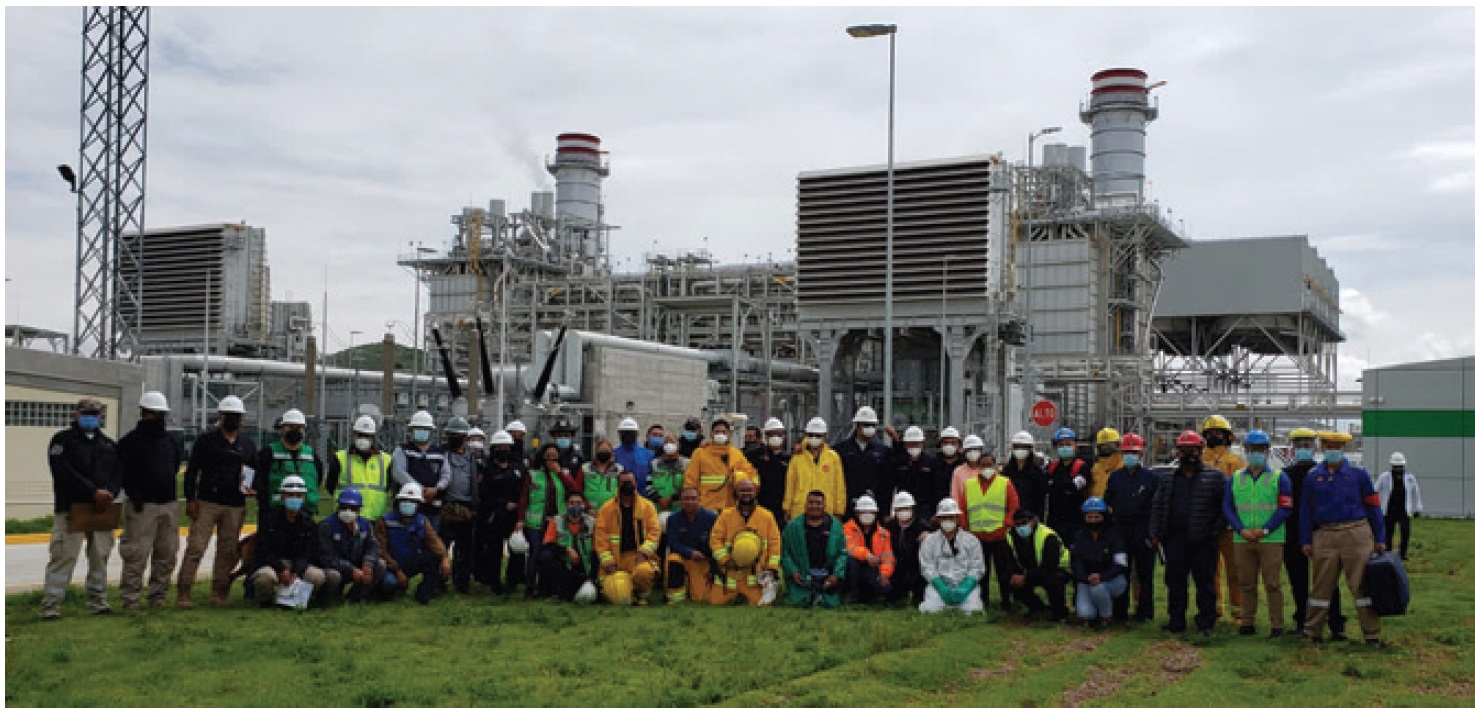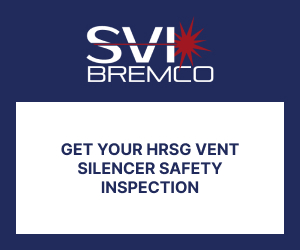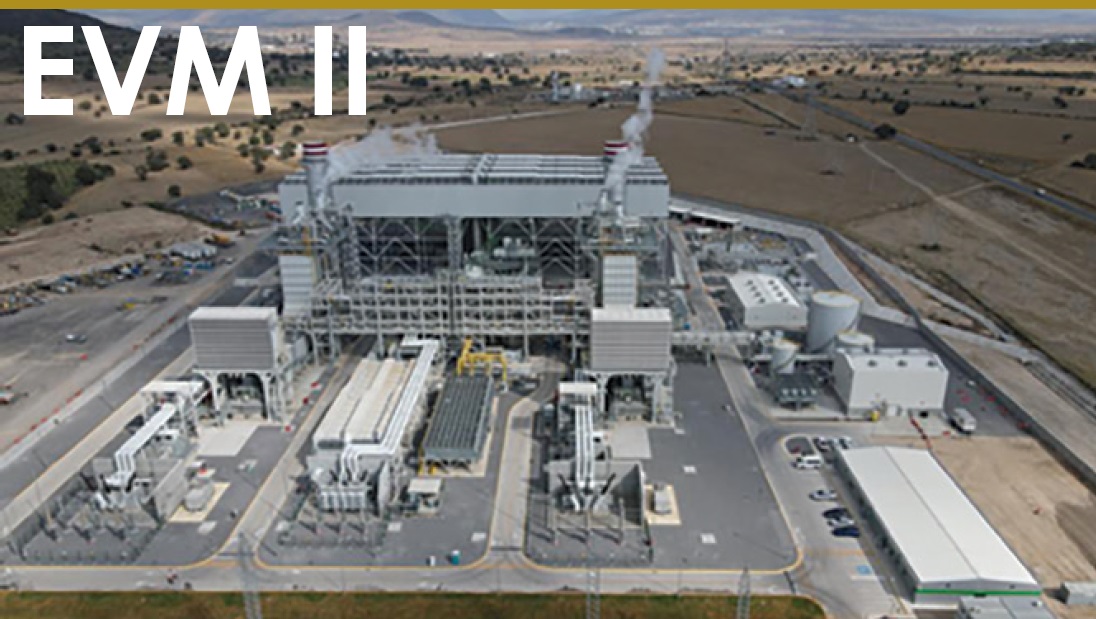
Energía del Valle de México II (EVM II)
Owned by EVM Energía del Valle de México Generador SAPI de CV
Operated by NAES Corp
850-MW, 2 × 1 combined cycle powered by 7HA.02 gas turbines, located in Axapusco, state of México, México. Site conditions limit GT rated ISO output of 384 MW to 275 MW in baseload service
Plant manager: Javier Badillo
Mix demin, service water to improve evap-cooler performance
Challenge. EVM II’s filter houses are equipped with evaporative coolers designed for service water consistent with vendor specifications. During the first year of operation, the evap-cooler media was encrusted with foulant because of water-quality issues. Result: The gas turbines lost power and efficiency. Media that had a lifetime expectation of around three years required replacement in year one. Cost estimate for new media for both evap coolers was about $250,000, plus outage time and the cost of replacement.
Solution. Determine the best option for improving water quality, keeping project cost and safety in mind. The approved plan was to mix 80% demineralized water produced by the plant’s existing water-treatment system, and 20% service water, thereby increasing the cycles of concentration and reducing water consumption.
The new evaporative-cooling system consists of the following: HMI, PLC, control valves, and instruments with interlock of temperature and level. It is controlled by the DCS for each gas turbine.
During commissioning, the O&M staff was trained to understand how the new system works and how to troubleshoot problems to maintain high evap-cooler availability. Development of maintenance and chemical-analysis procedures were part of the program to maintain good control of water condition using the HMIs.
Results. The lifetime expectation for the new media is three to four years based on performing the maintenance procedures and conducting the required chemical analyses online twice monthly. The new system and operational plan boost power output by 15 MW per engine (Fig 1).
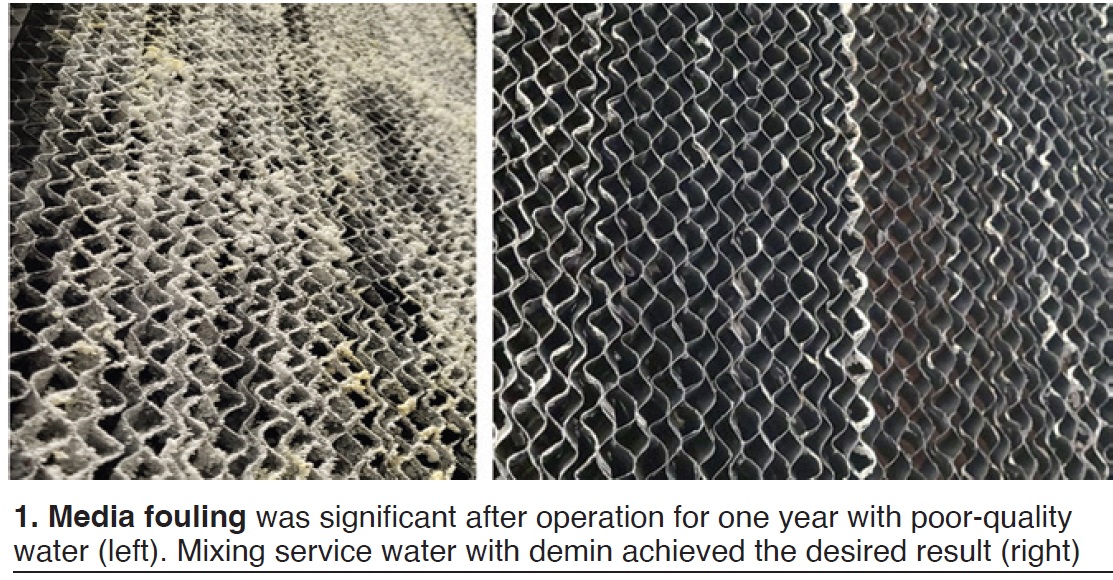
Equipment cost for both evaporative-cooler systems was $314,000. To his must be added the cost of demineralized water and the loss of generation for the week to install the new equipment. Evap-cooler water rejected after achieving the desired cycles of concentration, is sent to the plant’s zero-liquid-discharge (ZLD) system.
Project participant:
Carlos Moreno, plant engineer
Integrating hydrogen leak detection on generators
Challenge. Each of EVM II’s gas and steam turbines is coupled to a GE hydrogen-cooled Model H53 generator. The high-purity H₂ required by this equipment means the machines are constantly venting and adding hydrogen to assure purity. Nothing was provided by the EPC to detect H₂ at connections, cylinders, and the generator hydrogen-supply pipeline. Safety and H₂ consumption were ongoing concerns. Plus, the O&M staff had no procedure for safety training, nor a PM for detection of hydrogen leaks in the supply pipeline.
Solution. Conduct an industry review to identify the best methods for reducing hydrogen loss and promoting a higher degree of safety.
Example 1: Install H₂ detectors/transmitters in the generator enclosure and behind the generator, complementing those with visual means and audible alarm, to facilitate detection of a hydrogen leak by the O&M staff.
Example 2: Develop a safety procedure, “EVM2-SEG-023, Inspeccion de Fugas de Hidrogeno,” and a checklist of inspections to do weekly in the various areas and zones, enabling O&M staff to track leaks and generate corrective work orders.
Example 3: Install hydrogen-detection tape at every pipeline, tubing, and hydrogen-analyzer connection to visually identify a leak, if present.
With PM safety procedures, hydrogen HazGas detectors/transmitters (Fig 2), and H₂ detection tape (Fig 3), staff and facilities have triple redundancy to easy leak detection.
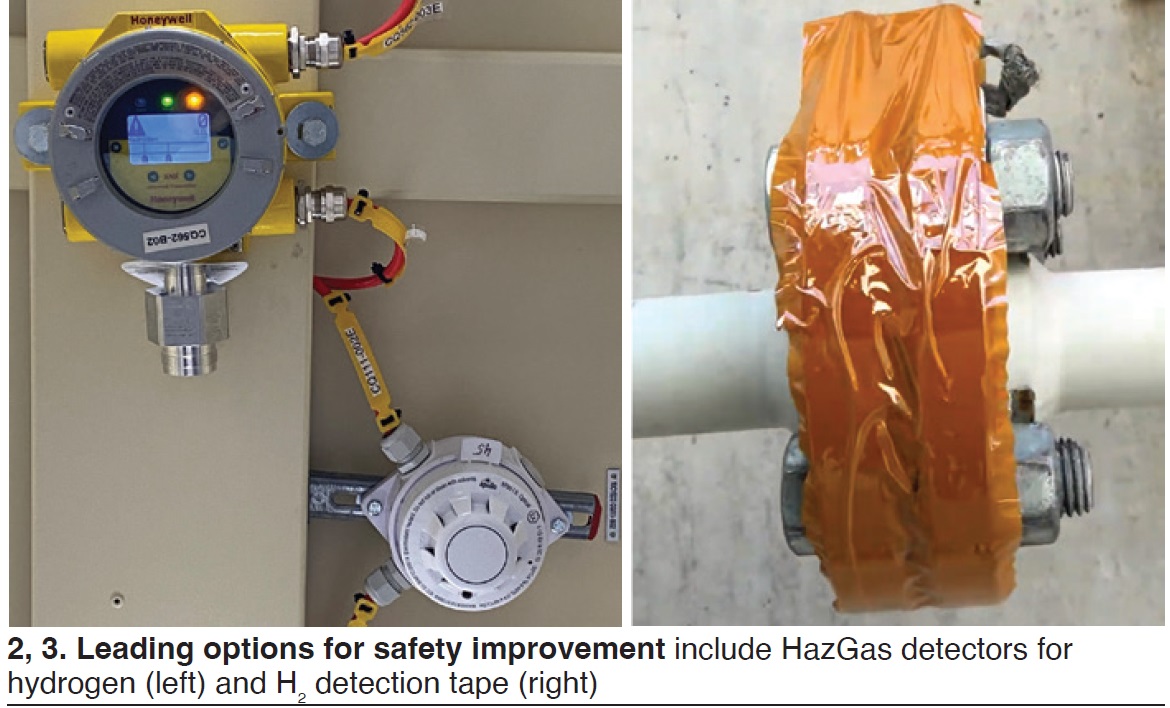
Results. A diagram was developed, enabling staff to understand easily the way H₂ leaks are identified and reported, thereby making the plant a safer facility. Today, O&M personnel are more comfortable about safety because they have many ways to detect hydrogen leaks.
Cost of the equipment—including HazGas detectors/transmitters, detection tape, etc—was only around $5000. Plant’s safety program now includes H₂ leak detection and emergency-situations training for staff. All of the equipment required was installed, commissioned, and implemented by plant personnel, as directed by the plant engineer.
Plant participant:
Carlos Moreno, plant engineer
Hydrogen generator mitigates gas-supply challenges
Challenge. As noted in the previous best practice, the H53 GE generators serving EVM II’s gas and steam turbines are cooled by hydrogen with a high purity requirement. The cost of constantly venting and replacing gas to maintain its purity is significant. Important to note is that the as-built plant was not equipped to produce hydrogen onsite, making it necessary to buy gas on the open market and rent the cylinders to maintain coolant pressure and purity for each generator.
Recall from the previous best practice that EVM II did not have a system for detecting hydrogen leaks at piping/tubing connections, cylinders, and the H₂ supply pipeline—a concern regarding the safety of personnel and facilities.
In the event of a generator emergency—such as a trip or maintenance call-out—requiring the venting of hydrogen there were two major concerns: safety and the immediate need for a large quantity of the generator coolant.
Solution. Select equipment for producing hydrogen onsite by electrolysis of demin water and then drying and purifying the product gases. To integrate this system, EVM II required only a source of demin water and instrument air—both already available in sufficient quantity to support the production hydrogen required. The H₂ detector/transmitter in Fig 2 allows operators to detect any leaks that might occur.
Installation of two hydrogen generators (Fig 4) to serve the plant increase the reliability of electric supply—important given EVM II’s close proximity to a major city.
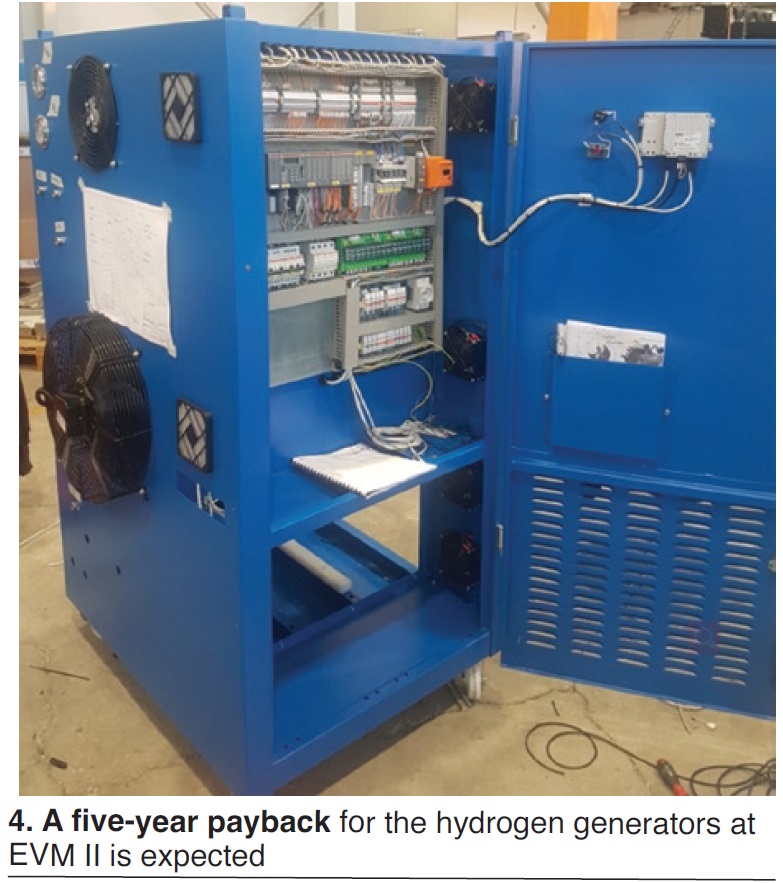
Results. Cost of the hydrogen generators was about $260,000; upgrade of support facilities—such as for demin-water production, compressed air, and electric power—was not required. O&M personnel were trained on the new equipment and did the installation and commissioning under the watchful eye of the plant engineer.
System payback is estimated at five years. A cumulative cost saving of more than $400,000 is expected by the time the project reaches its 10th anniversary. Expected lifetime of the hydrogen generators is 20 years.
Plant participant:
Carlos Moreno, plant engineer
